How unfair is school funding?

Fairer funding for schools has long been a thorny issue, particularly in rural areas, like the Westcountry, which seem to come off worse in the allocations. It does, however, finally seem as if progress is being made, with the Government recognising that the current system is unfair and taking steps towards introducing a National Funding Formula. When introduced the National Formula will provide an equitable basis to apportion funding across Local Authorities with the formula driven by pupil led factors (number of pupils, deprivation, High needs etc).
How does the current system work?
At present the Government makes a ring fenced grant to each local authority, the Dedicated Schools Grant, to be used in support of the schools budget. The level of grant given to each local authority is not currently determined on a national basis, but is instead based simply on ‘historical spending’. This has created a large disparity in the amount of grant each local authority receives that is not linked to the need of its pupils, giving an end result where some local authorities get more money per pupil than others for no clear reason.
Each local authority then disperses the Dedicated Schools Grant to its schools, both maintained and Academies, using its own Local Funding Formula. Although, there is variation in Local Funding Formulas across the country, steps have been taken to harmonise these and over 90% of the calculation is now dictated by pupil led factors (this compares to 71% in 2012-13).
How unfair is the current system?
| Ranking out of 151 LAs | Local Authority | Funding per pupil |
| 2 | Tower Hamlets | £7,014 |
| 17 | Nottingham | £5,309 |
| AVERAGE | £4,732 | |
| 95 | Cornwall | £4,397 |
| 99 | Plymouth | £4,364 |
| 109 | North Somerset | £4,321 |
| 114 | Torbay | £4,305 |
| 115 | Somerset | £4,278 |
| 134 | Dorset | £4,167 |
| 135 | Devon | £4,156 |
| 136 | Bournemouth | £4,154 |
| 148 | Poole | £4,007 |
The table above illustrates the disparity in funding between different local authorities. We have excluded the top placed local authority, the City of London, as it only includes one school. Nottingham is the best funded local authority outside of London.
Gross Value Added (GVA) statistics indicate the economic performance of an area and if we compare these between the five built up areas on the list above we find that, Nottingham is both the best off area and the best funded.
| Local authority | GVA per person1 | Funding per pupil2 |
| Nottingham | £26,748 | £5,309 |
| Plymouth | £17,579 | £4,364 |
| Torbay | £13,080 | £4,305 |
| Bournemouth | £20,537 | £4,154 |
| Poole | £20,537 | £4,007 |
It is important to stress, that we are not advocating a reduction or increase in funding for a particular area. We are simply trying to highlight the current unexplained differences in funding.
The solution – A National Funding Formula
Even before the start of the Academies movement, many involved in the education sector have campaigned for the introduction of a National Funding Formula to create parity across the country. The government has now finally acknowledged the problem and in July 2015 published a document “Fairer Schools Funding” that outlines the changes being put in place to transition to a National Funding Formula2. As the document states:
“for the first time in a decade, funding is allocated to local areas on the basis of the actual characteristics of their pupils and schools rather than simply their historic levels of spending.”
Although this is welcome news, we are still some way from a National Funding Formula. This is because the changes to school budgets need to occur in a gradual manner to allow schools to flex their spending accordingly. The transitional measures include:
- Setting minimum funding levels for the most deprived pupils
- An additional £390m to be split among the least fairly funded areas
- Setting a national minimum AWPU (Age Weighted Pupil Unit)
Update: Chancellor confirms National Funding Formula
In his Autumn Statement, the Chancellor confirmed that a National Funding Formula will be implemented by 2017.
References:
- Regional Gross Value Added (Income Approach) NUTS3 Tables – published by the Regional Accounts Office for National Statistics
- Fairer Schools Funding – published by the Department for Education






